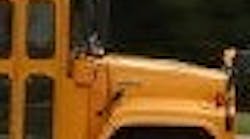By Ian Verhappen, DFI ColumnistCONTINUING WITH the past theme of what is required for a successful digital network installation; this month we will discuss the critical link in the chain, the installation contractor. Unfortunately there is not yet a certification or similar available to ensure a minimum degree of competence for the trades commonly used to do this work. The good news however is that with the increased deployment of Ethernet in all sorts of environments, including many newer homes these trades people are gaining experience. (Of course in some cases, another way of saying experience is “I’ve made that mistake before.”) The trick is to not be the one providing the experience.
Providing all of the people working on the project a minimum level of training is one of the ways to reduce your risk when installing fieldbus systems. This training will make those on the team aware of the differences between the conventional cabling and termination with which they are familiar and the unique requirements of the bus network that is being installed. This training program in most cases will not need to be extensive and can be as simple as a series of “tool box talks” or pre-job instruction sessions in the morning for 30 to 60 minutes before the crews head out to the field for each “phase” of the installation. The alternative is to schedule the crew for more traditional classroom training of approximately one day to cover the complete set of material in a controlled environment with suitable exercises to apply the “theory.”Typical items that are different for fieldbus systems include the need for terminators, special termination assemblies, special cable or connection of the cable in a different way than has been done in the past, as well as in some cases requirements on spacing between the digital network cable and other cables in the field junction box and associated cable trays and to a lesser extent conduit runs.Fortunately, at least in the case of the Fieldbus Foundation a number of facilities around the world have been identified to provide a variety of training courses on this technology, including: 3 in North America and others in Singapore, Japan, Northern Europe, and China. The End User Council in Australia also provides similar training.Another good place to start your familiarization of a new technology is the web site of the appropriate supporting organisation for their technical overview guide since this document summarizes the unique attributes of the fieldbus in question.The final component to a successful installation is the knowledge on how to use the tools and diagnostic equipment that verifies the work has been done correctly. Fortunately, continuity checks and similar exercises remain unchanged because a wire is still a wire. What does change however is the need to determine additional parameters beyond Resistivity and Impedance, for example capacitance in Profibus PA and Foundation Fieldbus H1.The good news here is that there are a number of simple tools on the market to assist in verifying network integrity and additional products just coming out of their respective “skunk works” that will be released for sale by several manufacturers over the next 6 months.Next column we will provide a short “tutorial” about Function Blocks and how they are used by Fieldbus.As always, your comments and suggestions on the above as well as for potential future topics of discussion are encouraged. Please contact me at the information below.
Ian Verhappen is and ISA Fellow and Director at ICE-Pros, Inc. an independent Instrument and Control Engineering consulting firm specializing in fieldbus, oil sands automation, and process analyzer systems. Ian can be reached at[email protected]or through his web site www.ICE-Pros.com.
|
RELATED ARTICLE The flavors of Industrial Ethernet |
| About the Author |




